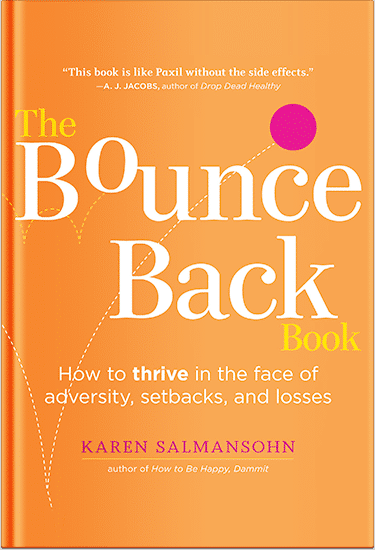 If you’re an artist or at least interested in the arts in any way, you’ve probably heard about the process of rendering. In the simplest terms, it refers to the creation of realistic representations of objects or scenes. Different tools can be used to complete this procedure, ranging from paint and charcoal to digital styluses to add texture, color, lights, and shadows. Rendering adds depth and dimension to art, turning sketches into vibrant and dynamic visual displays.
If you’re an artist or at least interested in the arts in any way, you’ve probably heard about the process of rendering. In the simplest terms, it refers to the creation of realistic representations of objects or scenes. Different tools can be used to complete this procedure, ranging from paint and charcoal to digital styluses to add texture, color, lights, and shadows. Rendering adds depth and dimension to art, turning sketches into vibrant and dynamic visual displays.
In a sense, it makes the artwork more realistic and even tangible. The process can be quite complex and intricate, with several different tasks included in it. Nowadays, artists also have the potential to use a peer-to-peer GPU network located on the Solana blockchain.
Users can monetize this idle computing power and use it to access rendering services. So, if you notice that more people are interested in Render price (the value of a digital token that is located solely on the decentralized ledger), it’s most likely because an ever-growing number of people participate in this ecosystem.
The importance of rendering
Having art as a hobby offers a plethora of unique benefits. Art can help you quieten your mind and soothe overthinking, reducing stress and boosting your creativity and cognitive skills at the same time. It’s a great way to relax and become more mindful as well, something that is all the more important given the hectic schedules most people have. On top of that, art will build your confidence and increase your self-esteem. When you see that you’ve succeeded in creating a piece, you will gain renewed appreciation for your skills. Moreover, as you keep practicing, your abilities will develop as well, so that the quality of your art increases exponentially, further contributing to your self-assurance of your capacities.
While you can approach art however you want, learning some theory and being aware of the different techniques will provide you with an edge if you are deliberate about honing your skills. Rendering is more than a simple technique in this sense; it is a cornerstone of the artistic process. It is more than drawing an object; it’s your unique artistic interpretation and the way in which you deal with all the elements that give your composition its particular character. Both beginners and seasoned artists must be aware of the importance of rendering in order to ensure their works are just as they have visualized them.
Digital rendering
The term rendering originated in 3D computer graphics, where it was used to describe the entire process involved in the creation of a digital scene with the help of a modeling program. 3D objects are created and then placed in their environment, being processed with techniques such as texture mapping and vertex shading with the goal of making them look as lifelike as possible. These techniques are used to create video games and animation shows since they have the ability to simulate reality.
Digital rendering is achieved with the help of computers, with the process being pretty much the same as the one used for 3D. Although there are some differences, the two have similar approaches.
Sketching
The sketch is the first rough idea for an art piece. Its goal is to kickstart the process and establish the general outline of your composition. Sketching lets you decide upon the placement of all the different elements in your artwork, including the poses of the characters and basic perspective. The horizon line and vanishing points are also established during this step. Don’t overcomplicate things by adding details, and try not to overthink the process. There’ll be plenty of time for additions later on.
Preliminary stage
The preliminary drawing is a cleaner and more refined version of your sketch. For many artists, this is an optional step, but if you’re a beginner, you might want to do it to obtain a cleaner final result. You can vary line weight to make the ensemble more appealing and improve the quality of the line art as a whole. If you’re aiming for digital comic art, you will definitely need to complete this step.
Base colors and light
The base colors refer to painting the scene without worrying about additional considerations such as lighting. This part establishes the basic color scheme of your painting. You can paint on a separate layer to change the hues without affecting the lines and even set the upper layer to “multiply” (a common feature in painting software) so that the colors show through. Adding light and shadow is the next step and the first to make your art look three-dimensional.
You will focus on shading at this stage, which you start by separating the flat hues into a light area and a shadow area. It is one of the most complex parts of the process where you will deal with concepts such as reflected light, midtones, and reflections.
Blending and textures
During blending, you mix neighboring tones and textures to create smoother transitions between them. This brings an additional layer of realism since, in the real world, light very rarely creates flat and hard shadow shapes. The two transition into each other softly, which is precisely what blending is trying to achieve. Smudging tools and different types of brushing techniques are employed for blending. The final step is adding texture and details. These two are typically the only things that are still missing by this point, and adding them will make the painting decidedly three-dimensional.
The different textures provide the best grounds for visual exploration and add depth to the piece.
The coin
The fact that a crypto blockchain can be used as part of this process might sound strange, but it is nonetheless true. The coin associated with this ecosystem recorded an immediate growth spike in 2024 after its software was used in an Apple software video. Price appreciation was instantaneous, and all that was needed was a three-second mention. The digital token and network make the intricate rendering process easier for users by allowing GPU-based jobs to be distributed and processed on a larger system.
If you’re an artist and would like to take your works to the next level, it might be time to learn more about rendering.
P.S. Before you zip off to your next Internet pit stop, check out these 2 game changers below - that could dramatically upscale your life.
1. Check Out My Book On Enjoying A Well-Lived Life: It’s called "Your To Die For Life: How to Maximize Joy and Minimize Regret Before Your Time Runs Out." Think of it as your life’s manual to cranking up the volume on joy, meaning, and connection. Learn more here.
2. Life Review Therapy - What if you could get a clear picture of where you are versus where you want to be, and find out exactly why you’re not there yet? That’s what Life Review Therapy is all about.. If you’re serious about transforming your life, let’s talk. Learn more HERE.
Think happier. Think calmer.
Think about subscribing for free weekly tools here.
No SPAM, ever! Read the Privacy Policy for more information.
One last step!
Please go to your inbox and click the confirmation link we just emailed you so you can start to get your free weekly NotSalmon Happiness Tools! Plus, you’ll immediately receive a chunklette of Karen’s bestselling Bounce Back Book!


 If you’re an artist or at least interested in the arts in any way, you’ve probably heard about the process of rendering. In the simplest terms, it refers to the creation of realistic representations of objects or scenes. Different tools can be used to
If you’re an artist or at least interested in the arts in any way, you’ve probably heard about the process of rendering. In the simplest terms, it refers to the creation of realistic representations of objects or scenes. Different tools can be used to 